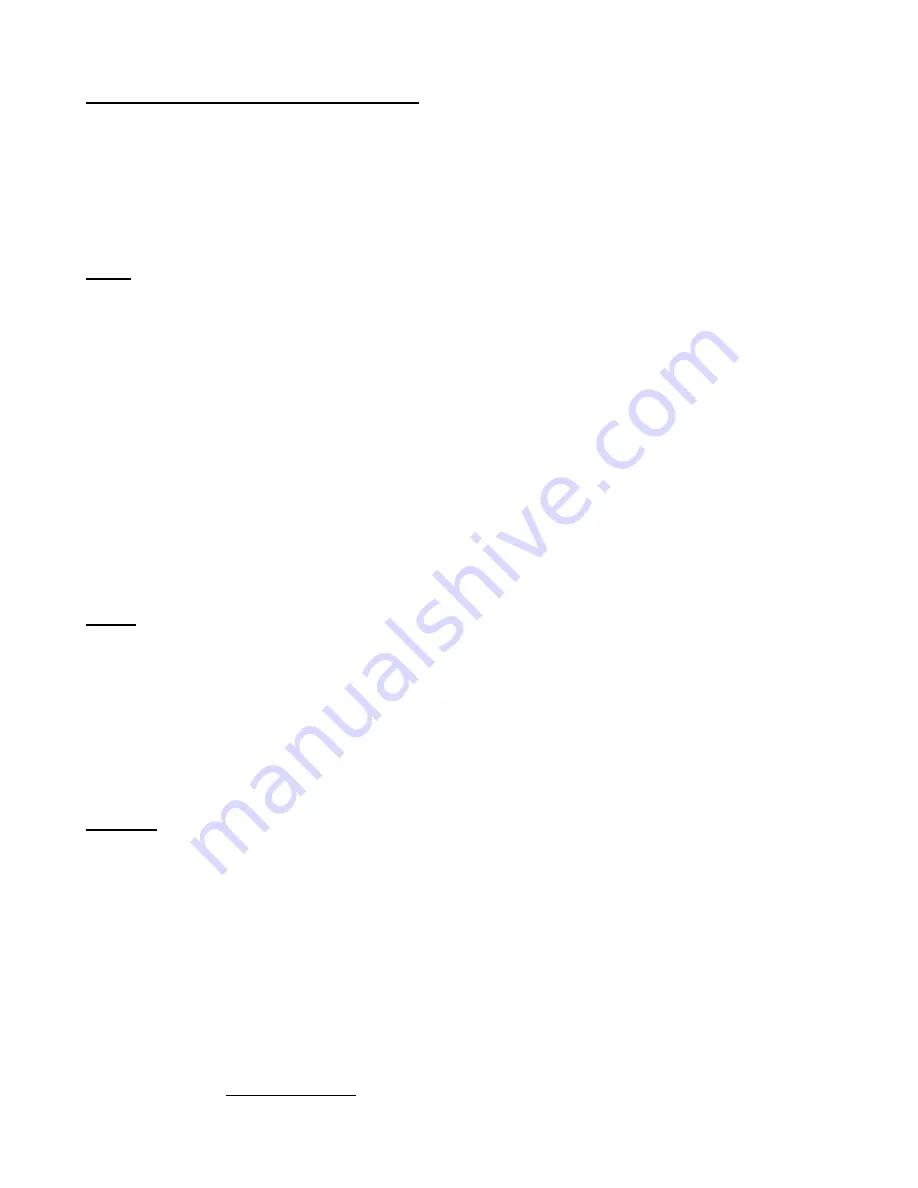
29
4.2 Settings for Your Materials and Images
Naturally, your own experimentation will teach you the best speed and pressure settings to use with your
images and materials. The following are very rough guidelines to use as a starting basis. Always start with more
conservative settings and then increase, as needed. This will prevent unnecessary wear on the mat and dulling
of the blade due to over-cutting. Get into the habit of using the
Test
button on the Klic-N-Kut itself to make sure
your settings are sufficient. In the off-line mode,
Test
will cut a small test shape so you can check for
completeness of the cut and ensure the blade has only cut the material and is not cutting into the mat.
Blade
At the time of this writing, there are two blades provided with your Klic-N-Kut: The red-capped blade is a
good choice for cutting thinner materials, such as paper, vinyl, and flat cardstock. The Sliver 2 blue-capped
blade is good choice for cutting thicker materials, such as textured cardstock, clear rubber, embossing
rubber, chipboard, craft foam, stiffened felt, and styrene.
When setting the blade length, hold the blade holder next to the material so that you can more accurately set
the length to match the thickness of the material. Having the blade fully extended will NOT result in better
cutting. In fact, it can cause skewing, damage to the blade, and damage to the mat. When conducting the
test cut, be sure to check your mat for lines. You should be able to set the length to get clean cuts but with
no visible markings on the mat.
Remember to change the
Overcut
and
Trailing Blade
values with any blade change or if your image is
particularly large or small, as presented in
Section 2.2 Important Defaults to Check.
When inserting the blade holder into the blade holder seat on the machine, the tip of the blade should not be
touching the material you are cutting. For thin materials the rim on the blade holder should be touching the
blade holder seat. But when cutting thicker materials, raise the blade holder slightly so that the tip is a tiny
bit higher. Refer to
Section 9.1 Cutting Chipboard
for more details.
Speed
With the cutter in Online mode, press the top and bottom
+
or - buttons to increase or decrease the cutting
speed, respectively. The range is from 50 mm/sec to 600 mm/sec. Note that you can change the speed while
the cutter is operating. When engraving or drawing with a pen, you will probably want to use higher speeds.
It is recommended, however, that you select slower speeds when cutting intricate designs or thicker denser
materials.
For small and/or intricate designs, slower speeds are better. For large or simple designs, much faster speeds
should work fine. A slow speed is 50 or 100. A fast speed is around 300. A speed of 600 is extremely fast but
useful when coloring in images with a pen, or engraving.
Pressure
With the cutter in Online mode, press the
left or right
+
or - buttons to increase or decrease the pressure,
respectively. The range is from 1 to 160 indicating a scale which spans from the minimum to the maximum
force possible. The pressure, like the speed, can be changed while the cutter is operating, by pressing the
Pause
button, making the change, then pressing
Pause
again to resume the cut.
The pressure needed can vary depending on the thickness of the mat/materials, height of the blade, and the
dullness of the blade. This makes it all the more difficult to recommend values. Select a lighter pressure for
thinner materials and a heavier pressure for thicker materials. As your blade becomes dull, it will be
necessary to increase the pressure. Remember to decrease the pressure when you replace your blade.
You may wish to keep a notebook of your cutting experiences with various materials. Besides just cutting
pressures, record things like which blade you used, number of passes, overcut and trailing blade settings (if
applicable), and the speed. If your material comes in different textures or thicknesses, make note of that, as
well.
The following are approximate values. Again, remember to use the
Test
button on the machine to cut small
rectangles to verify the pressure setting and your blade length are sufficient for the cut. Also remember to






























